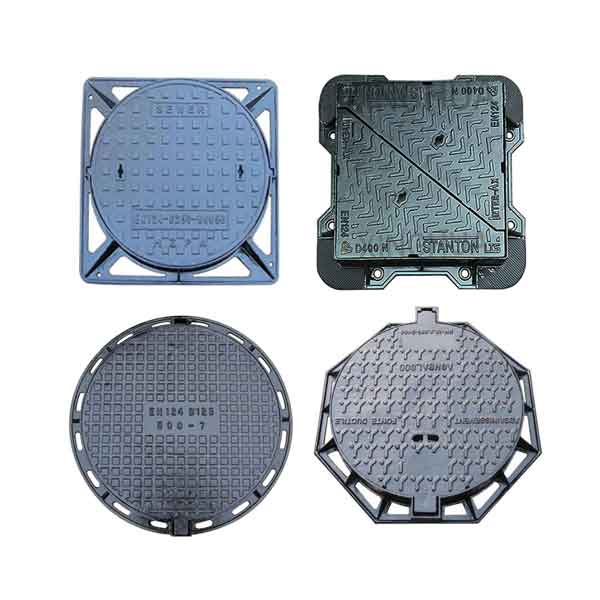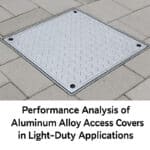Manhole covers are critical safety components in urban road systems. They provide access to underground utilities, such as drainage, sewer, and electrical networks. However, when not properly designed, installed, or maintained, they pose risks to pedestrians, cyclists, and vehicles. Ensuring the safety of manhole covers is therefore a top priority for municipal engineers, utility companies, and infrastructure planners.
This article presents a comprehensive approach to enhancing manhole cover safety, backed by technical standards and industry best practices. Each section outlines proactive measures to prevent accidents, reduce maintenance costs, and improve public confidence in urban infrastructure.
Importance of Manhole Cover Safety
The safety of manhole covers impacts multiple stakeholders. Motorists rely on flush, stable covers for road smoothness. Pedestrians and cyclists expect them to be slip-resistant and level. Utility operators require secure access without compromising structural integrity. Failure in any of these aspects may result in traffic accidents, service interruptions, or legal liabilities.
Key Factors Affecting Manhole Cover Safety
1. Material Strength and Durability
To ensure structural reliability, manhole covers must be fabricated from high-strength materials such as ductile iron, steel, or fiber-reinforced composites. These materials offer superior impact resistance and are designed to endure heavy traffic loads.
- Ductile Iron: Provides excellent load-bearing capacity and fatigue resistance.
- Composite Covers: Lightweight and corrosion-resistant, ideal for corrosive environments or areas with strict weight regulations.
2. Load Classification and Road Grade Compliance
Different road types require covers of varying load classes. Standards such as EN 124 classify manhole covers from A15 (pedestrian-only) to F900 (airports and docks).
- Urban Roads: Require Class D400 or higher to withstand constant traffic.
- Highways: Often demand E600 or F900 covers for extreme load conditions.
Selecting the correct class is essential to prevent structural failure or displacement under load.
3. Anti-Slip Surface Treatment
Slippery covers are major hazards, especially in wet weather. Therefore, textured surface patterns, raised grip treads, and anti-skid coatings should be integrated during manufacturing.
- Ensure covers meet slip resistance standards such as BS 7976 or ASTM D2047.
Best Practices for Manhole Cover Installation
1. Proper Seating and Alignment
Manhole covers must sit flush with the road surface. Any vertical misalignment increases the risk of impact damage or tire blowouts.
- Use leveling rings and polymer concrete frames to maintain elevation consistency.
- Install expansion joints to accommodate thermal movement and reduce edge chipping.
2. Secure Fixing and Locking Mechanisms
Unsecured covers are vulnerable to theft and displacement. Modern locking systems help prevent unauthorized access while maintaining alignment.
- Use bolted or twist-lock mechanisms in high-risk areas.
- For critical zones, consider smart locking covers equipped with IoT sensors.
3. Drainage and Erosion Control
Standing water can corrode materials and erode subgrade support. Drainage design around the manhole frame must redirect water away from the seating area.
- Install catch basins or trench drains nearby.
- Seal the manhole collar with waterproof mortar or sealants.
Inspection and Maintenance Protocols
Routine inspection is the cornerstone of preventive maintenance. Establishing inspection intervals based on traffic density, environment, and usage ensures that minor issues are identified early.
- Visual Checks: Inspect for cracks, corrosion, tilting, or missing parts.
- Load Testing: Conduct annual load capacity tests on high-traffic covers.
- Resurfacing: Reapply anti-slip treatments and correct surface wear when needed.
Technological Advancements for Enhanced Safety
1. Smart Covers with Sensors
Embedded sensors can detect load variations, displacement, or unauthorized access. These systems send real-time alerts to maintenance crews, improving response time and reducing risk.
2. Finite Element Analysis (FEA) in Design
Use FEA to simulate load conditions and optimize the cover’s geometry. This allows engineers to preempt stress points and minimize fatigue-related failures.
Conclusion
Manhole cover safety is not a single-step task—it requires strategic planning, correct material selection, compliant installation, and ongoing maintenance. With increased urbanization and heavier traffic, the demand for safer, more reliable manhole solutions is more critical than ever.
By following engineering standards and leveraging new technologies, stakeholders can significantly reduce incidents, enhance road performance, and extend infrastructure life cycles.
FAQs
Q: What type of manhole cover is best for highways and industrial zones?
A: For high-load environments, ductile iron covers with F900 classification are most suitable due to their high load capacity and fatigue resistance.
Q: How often should manhole covers be inspected?
A: It is recommended to inspect manhole covers at least twice a year in urban areas, and more frequently in high-traffic or flood-prone zones.
Q: What safety measures prevent theft or displacement of covers?
A: Lockable covers with bolt-down or twist-lock systems, along with GPS tracking and weight sensors, significantly enhance security.
Q: Are there affordable yet durable manhole cover options?
A: Yes. Manufacturers like Xinghua Casting provide high-quality and cost-effective manhole covers made from durable materials, with excellent performance in both urban and industrial settings.
Q: What role does anti-slip treatment play in safety?
A: Anti-slip surfaces reduce the risk of pedestrian accidents, particularly in wet or icy conditions, and ensure better grip for vehicle tires.





